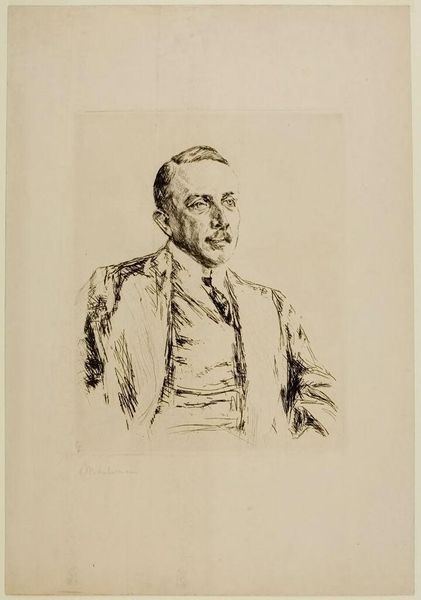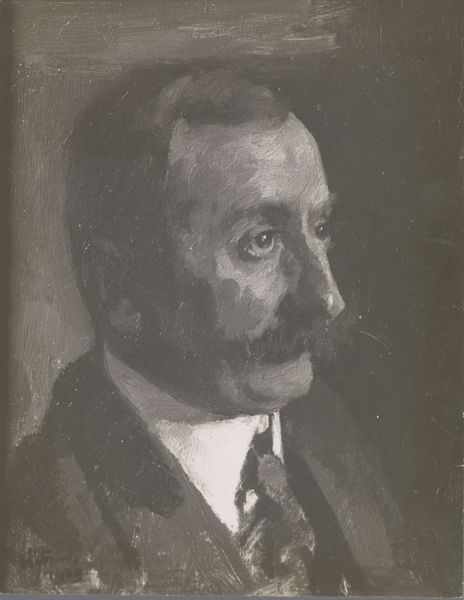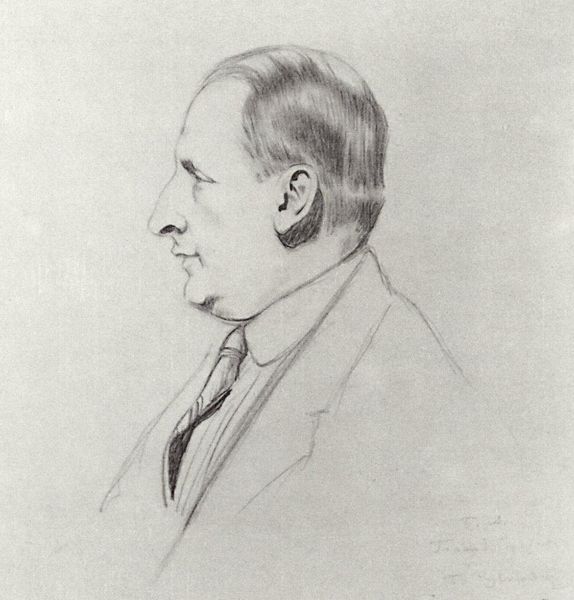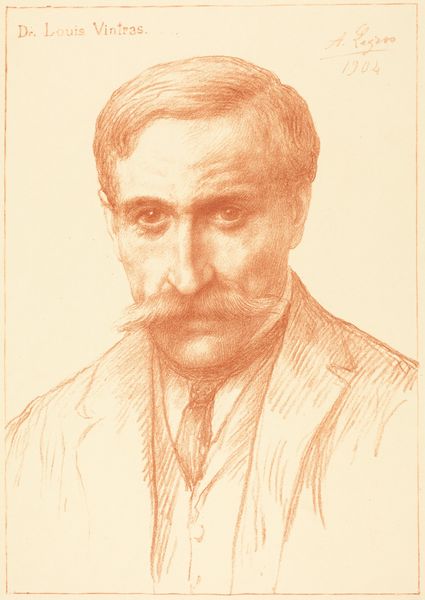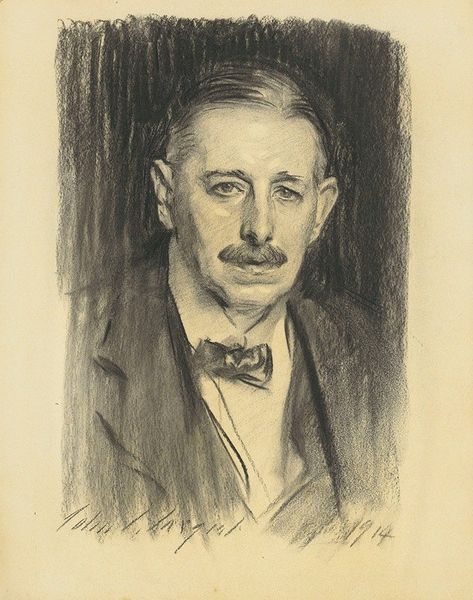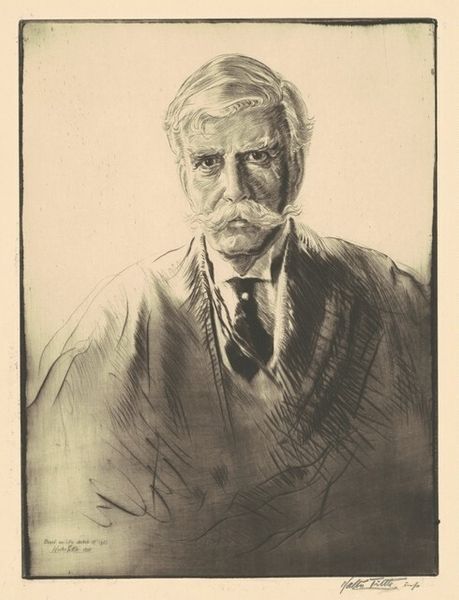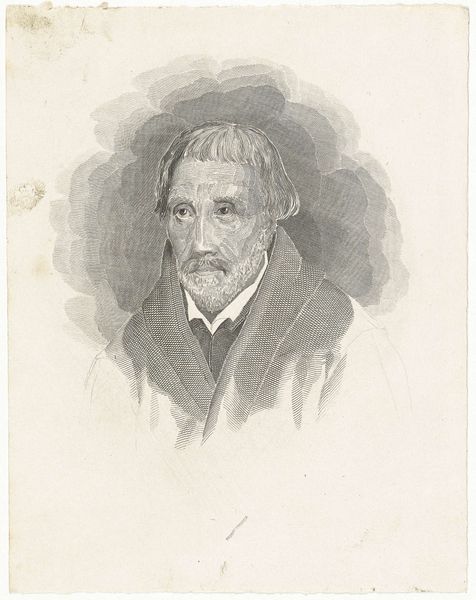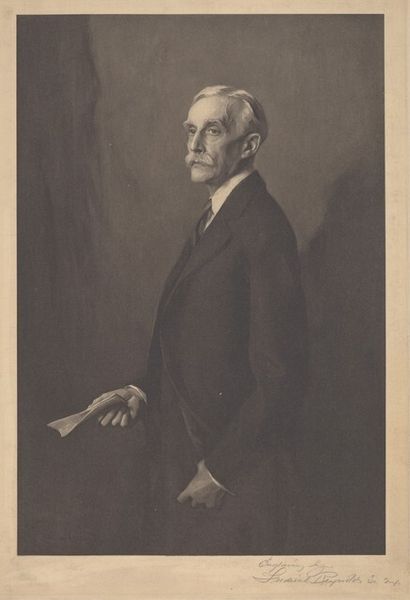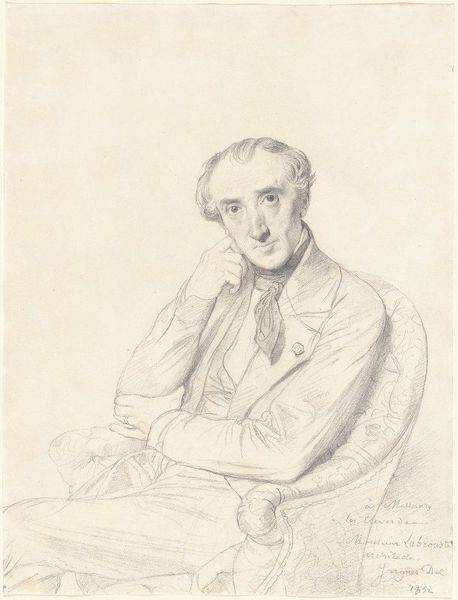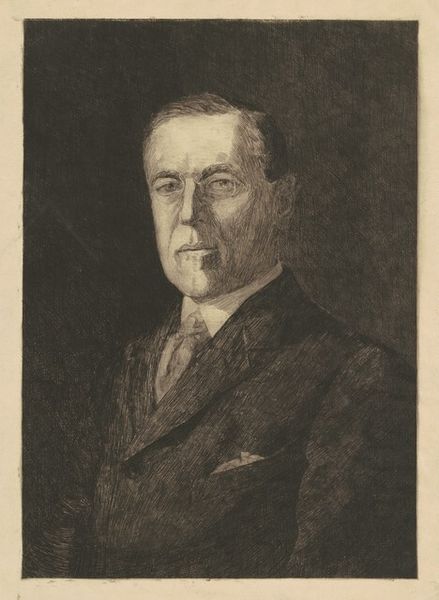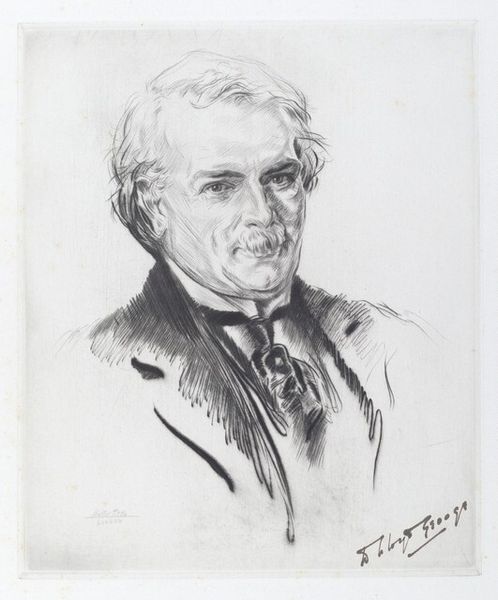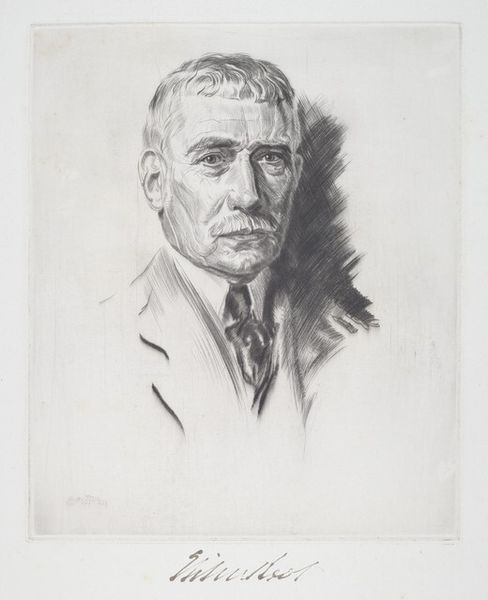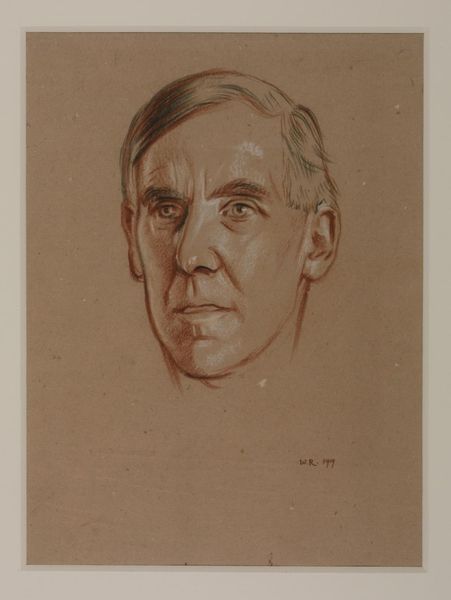
drawing, print, pencil
#
portrait
#
drawing
# print
#
pencil sketch
#
charcoal drawing
#
pencil drawing
#
pencil
#
portrait drawing
#
realism
Copyright: National Gallery of Art: CC0 1.0
Editor: This is a drawing of Andrew W. Mellon by Frederick Pauling. It looks to be either a pencil or charcoal sketch, maybe even a print based on one. He seems so proper and dignified. What can you tell me about this portrait? Curator: This portrait offers an interesting window into the relationship between art, power, and public image. Mellon, as Secretary of the Treasury, was a figure of immense influence, and this kind of formal portrait, with its rather classical realism, consciously reinforces that perception. The distribution of these portraits, often through prints as you suggested, served a key role in constructing and maintaining that image in the public sphere. Editor: So the portrait becomes a sort of political tool? Curator: Precisely. Consider who commissioned it, where it was displayed, who saw it. These portraits weren't just about capturing a likeness; they were about shaping a narrative. A narrative of competence, stability, and trustworthiness. These qualities, presented through a 'realistic' and detailed image, project specific institutional and socio-political power at the time. Editor: It makes you think about how official portraits function even today, right? The subtle ways they convey authority and shape public opinion. Curator: Absolutely. And it highlights how crucial it is to critically examine the images that surround us, especially those presented by or about powerful figures. Visual rhetoric plays such a huge part. What do you take away from the way this impacts current visual representation? Editor: That understanding the historical context can make us more conscious viewers of even seemingly straightforward images today. I think that's the real power of looking at art from this historical perspective. Curator: Exactly. Seeing art as enmeshed with political and social forces opens up a much richer understanding of both the art and the society that created it.
Comments
No comments
Be the first to comment and join the conversation on the ultimate creative platform.
